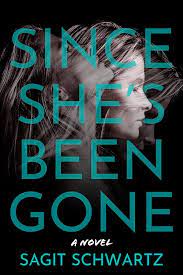As a licensed psychotherapist, I can attest to the importance of mirroring in therapy when a patient shares their feelings, thoughts, and experiences, and the clinician mirrors them back in a supportive way. For example, if a patient discloses something they’ve never shared with anyone before due to a fear of being judged, and the clinician applauds the bravery of their disclosure, the patient has the opportunity to feel seen for the first time. The act of mirroring affirms their experience and may leave them feeling less alone, as one of the antidotes to despair is human connection.
The same can be said and has been said about books—novels in particular:
“Books are sometimes windows, offering views of worlds that may be real or imagined, familiar or strange. These windows are also sliding glass doors and readers have only to walk through in imagination to become part of whatever world has been created or recreated by the author. When lighting conditions are just right, however, a window can also be a mirror. Literature transforms human experience and reflects it back to us, and in that reflection we can see our own lives and experiences as part of a larger human experience. Reading, then, becomes a means of self-affirmation, and readers often seek their mirrors in books.” ― Rudine Sims Bishop, professor emerita at Ohio State University
Because books are often used as mirrors by readers for their own experiences, mental health representation in fiction is especially important. Adult contemporary fiction, including the crime fiction space, has long featured characters with various mental health issues. Some examples include addiction (alcohol use disorder) in The Girl on the Train by Paula Hawkins, self-harming (non-suicidal self-injury disorder) in Sharp Objects by Gillian Flynn, and domestic violence (post-traumatic stress disorder) in The Last Flight by Julie Clark.
While eating disorders have been represented in young adult and, more recently, in new adult books, they have been largely left out of adult contemporary fiction. That is one of the reasons I set out to write a thriller featuring a protagonist in eating disorder recovery.
Since She’s Been Gone is about a psychologist, Beatrice, known to loved ones as Beans, who lost her mom to a hit-and-run twenty-six years ago. When a mysterious woman shows up at her office and tells her that her mother is still alive and in danger, Beans embarks on a heart-pounding journey to uncover the truth about what really happened to her mother. Don’t worry, I’m not giving anything away—this happens in the book’s first few pages!
It’s a dual-timeline thriller that shows how an eating disorder affected Beans beginning at the age of fifteen in the aftermath of her mother’s death and how it resurfaces later in her adult life, first during her marriage when she was pregnant and later when the bombshell news is dropped on her that her mother may still be alive.
One of the many misconceptions about eating disorders is that they only affect young, thin, white women. Recently, a national book club turned down my book, stating their readership skewed older and that books featuring eating disorders are better suited for a younger readership. In fact, eating disorders impact people of all ages, genders, races, and body types, affecting roughly 10% of the population. They also thrive in secrecy and shame, which is why representation in books matters so much. People are less likely to seek help if they carry shame due to false beliefs that they are the only ones impacted by something like being an adult with an eating disorder.
I’ve received messages from a wide range of readers who read advanced copies of my book, including but not limited to a nurse, a librarian, and a mother of a toddler, thanking me for writing it and explaining how an eating disorder has personally impacted them. Some of the most moving messages I’ve received have been from parents with children in eating disorder recovery thanking me for writing my book, stating it helped them better understand what their children are experiencing and up against.
Just as importantly, I have received messages from readers stating everything they had learned and thought about eating disorders from the media was incorrect and that they now have more compassion for those struggling with eating disorders. Let’s face it: the media has historically done a terrible job of portraying eating disorders as glamorous and aspirational due to the fat-phobic society we live in.
My hope is that publishing Since She’s Been Gone, which I view as a form of advocacy, will help destigmatize this illness so those impacted will reach out, open up, and seek treatment as needed. Being diagnosed with an eating disorder is not a choice. It is a disease. But the message in my book is clear: there is hope for recovery.
*


















